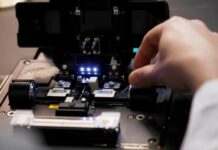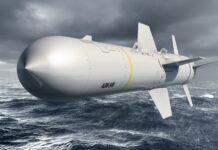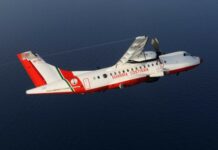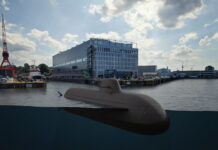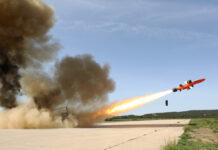In the contemporary operating environment at sea, navies need more mass in conducting both defensive and offensive tasks. For Western navies, defeating threats to ships at sea across the spectrum of operations – from maritime security challenges such as small boats swarming around choke points, to high-end naval warfare threats like large-scale anti-ship attacks – requires significant weight of fire. Cost constraints and avoiding the need to ‘crack a nut with a hammer’ means navies are seeking more affordable ways to generate mass to meet mass. Non-kinetic options in particular laser-based directed energy weapons (LDEWs) are central to this thinking.
Whether in the Indo-Pacific or Euro-Atlantic theatres, the ongoing disputes indicate that Western armed forces will probably need to engage in large-scale combat in the near future. In the Euro-Atlantic theatre, fighting in the Russo-Ukraine war (with Moscow’s full-scale invasion in February 2022) has demonstrated that high-end conventional warfare is blending new technologies such as uncrewed systems and hypersonic missiles with raw mass in weight of fire. As regards kinetic effect, several uses of uncrewed systems have illustrated the operational impact new technology is having. In the air, of note is the use of unmanned aerial vehicles (UAVs) – remotely operated by personnel using ‘first-person view’ (FPV) headset technology, to operate the vehicles – either to drop small explosive charges in an anti-personnel capacity, or to dive directly onto targets in a kamikaze manner. UAVs are also taking on other UAVs in air-to-air combat. In the maritime domain, Ukraine has deployed FPV-controlled unmanned surface vessels (USVs) to target Russian warships and support ships in port and at sea, sometimes manoeuvring several USVs together to confuse defences and defenders.
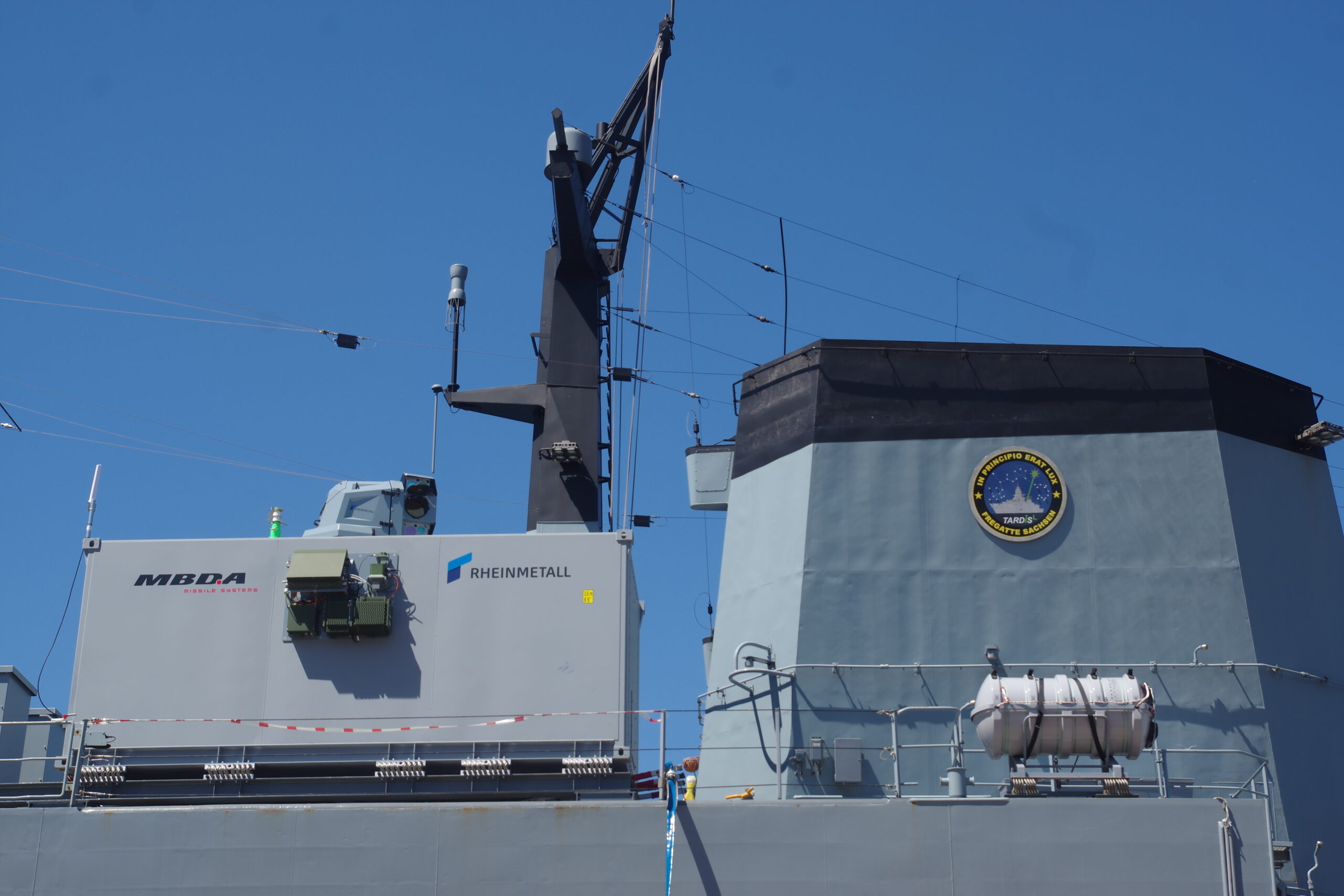
Credit: Bundeswehr/BAAINBw
On the perimeter of the Indo-Pacific theatre, the Yemen-based Ansar Allah/Houthi rebels’ anti-shipping campaign – since November 2023 targeting commercial and naval ships sailing in the Red Sea/Bab-al-Mandeb/Gulf of Aden corridor – has underscored the particular challenge for Western armed forces in finding affordable means to generate effect to counter massed in-bound threats. The Houthis have been launching relatively rudimentary (in technological terms) ballistic and cruise missiles, plus UAVs and USVs: occasionally, the air threat has been generated in such numbers that the US military has referred to the attacks as ‘waves’.
The difference between ‘wave’ and ‘swarm’ attacks is that swarm tactics require a degree of co-ordination, mandating command-and-control (C2) integration between platforms.
In response to the incoming Houthi attacks, the assembled Western naval forces – deployed to ensure that a globally significant waterway remains open to maritime trade – have fired various surface-to-air missiles (SAMs) in the local air-defence role. These have included Raytheon’s Standard Missile (SM)-2 and SM-3 Block-2A, and MBDA’s Aster 15, Sea Ceptor, and Sea Viper SAMs. Various onboard ship’s guns have also been used.
As regards using SAMs to target a threat that can manifest itself en masse, although the SAM systems have shot down many incoming weapons, the Houthi missile and uncrewed system attacks do not present the highest of high-end air threats. Yet the fact that such straightforward systems can be mass produced and deployed en masse challenges Western armed forces in terms of the cost-benefit curve for defending against such threats with, for example, high-end SAMs.
In sum, are there more cost-effective options that Western navies need to develop to provide the capacity to counter such lower-end mass, leaving the higher-end SAMs for the higher-end fight?
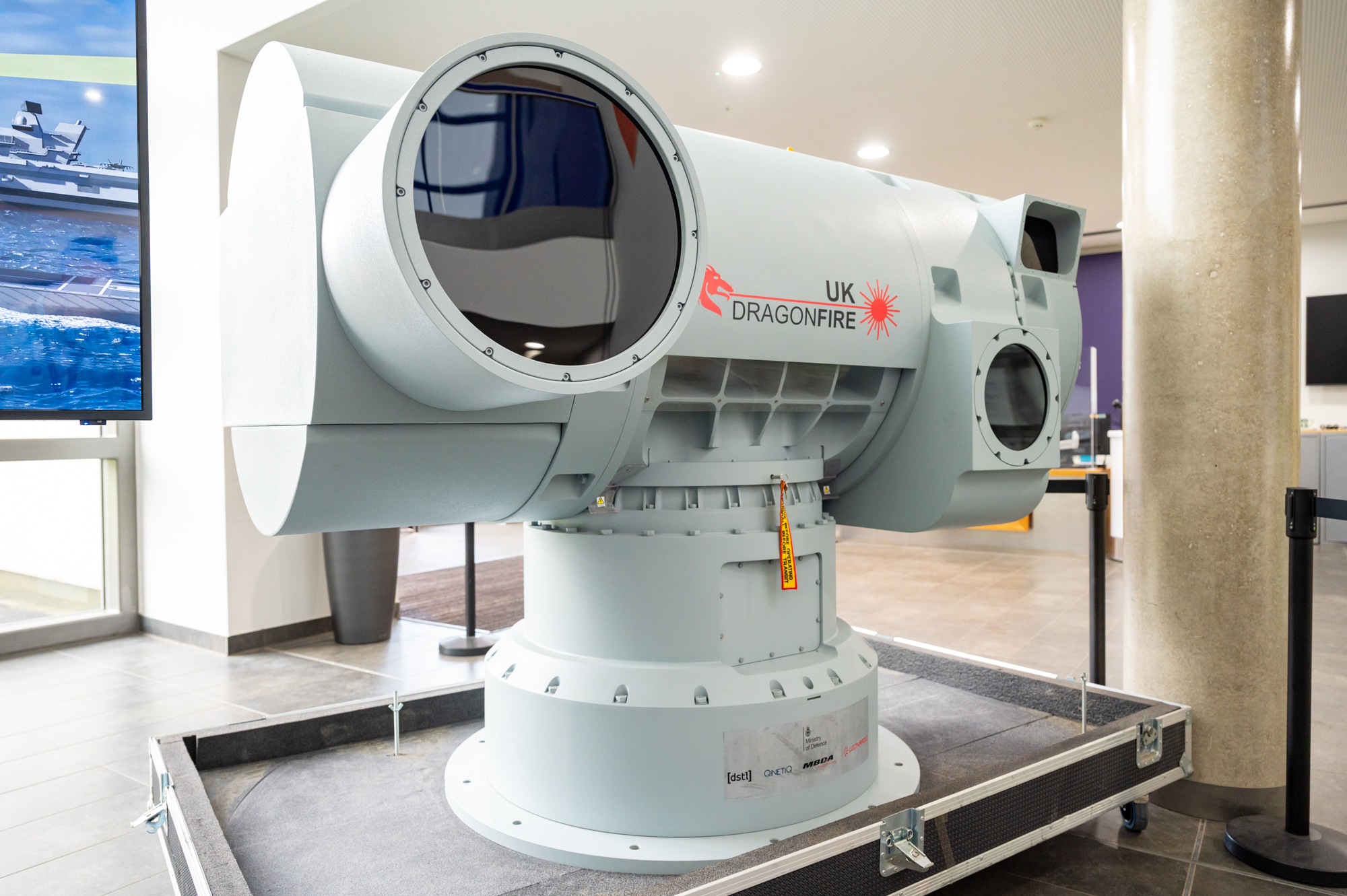
Credit: Crown copyright/UK MoD, 2024
Meeting the requirement
Alongside providing capacity to tackle a range of threats – including multiple, swarming uncrewed systems in the air and on the surface, plus ballistic and cruise missiles – new technologies such as laser-based weapons offer a new way to tackle such threats. What LDEW systems can offer here is the potential to generate mass effect, a sustainable capability and inventory (through being run on a ship’s electrical power), precision and speed in engagement, simplified logistics including no weapons re-supply requirement, a more compact at-sea footprint, and reduced collateral damage risk (bringing no ammunition onboard). Moreover, as LDEWs can be fired providing the ship has power, the ‘cost per engagement’ ratio offered should be more favourable – and affordable – for navies, as the only thing expended is the energy to power the system.
This nascent technology must still overcome some technical challenges. These include: maintaining the laser in a set point on a moving target, including maintaining laser power through that point; power generation to build the speed to tackle faster-moving threats and reduce the ‘burn time’ required to disable the faster-moving target vehicle; enhancing a ship’s cooling to maintain safety when generating higher levels of electrical power output; maturing the technology against continuously evolving operational requirements; and wider airspace management issues including removing any risk to other air assets (military or commercial) moving line-of-sight beyond the target vehicle.
Despite these challenges, the game-changing capability LDEW systems are perceived to offer – particularly in generating cost-effective power and mass – mean that several navies are accelerating capability development programmes to enable near-term introduction of operational systems.
The US Navy (USN) has been leading the way on maritime LDEW developments, working on laser-based technology and testing operational capabilities for some time.
In 2013, the USN conducted a three-year trial of its emerging LDEW capability, the Laser Weapon System (LaWS), onboard the afloat forward staging base USS Ponce amphibious support ship while the vessel was deployed to the Middle East.
In May 2020 and December 2021, the Flight I LPD-17 San Antonio class landing platform dock amphibious transport vessel USS Portland was used as a test platform for demonstrations of the Solid State Laser – Technology Maturation Laser Weapons System Demonstrator (LWSD) Mk 2 Mod 0 system. In the first test, conducted in the Pacific Ocean, the system disabled a small UAV; in the second, conducted in the Gulf of Aden, it successfully engaged a static surface training target. In a US Fifth Fleet statement released for the second test, the LWSD system was referred to as “a next-generation follow-on to … LaWS”.
USS Portland began testing the system in 2018, having been selected by the Office of Naval Research (ONR). The testing programme was slated to conclude in fiscal year 2024, to be followed up with the publishing of an assessment report.
The USN has also developed a 60-plus kW-class high-energy laser with integrated optical-dazzler and surveillance (HELIOS) capability. This is the first tactical LDEW system set for integration onboard in-service USN ships and has been fitted already to the DDG 51 Arleigh Burke class Flight IIA guided-missile destroyer USS Preble.
The USN’s at-sea laser capability development is being reflected in testing ashore. In February 2022, an ONR demonstration of what is referred to as a Layered Laser Defence (LLD) system – an all-electric, high-energy laser – was used to defeat in-flight a subsonic cruise missile representative target. A USN statement noted the LLD system included a high-resolution telescope, used for tracking and identifying inbound air threats and conducting post-targeting damage assessment. ONR held the test at the US Army’s High Energy Laser Systems Test Facility at White Sands Missile Range, New Mexico.
“Innovative laser systems like the LLD have the potential to redefine the future of naval combat operations,” said Rear Admiral Lorin Selby, the USN’s Chief of Naval Research, in the statement. “They present transformational capabilities to the fleet, address diverse threats, and provide precision engagements with a deep magazine to complement existing defensive systems and enhance sustained lethality in high-intensity conflict.”
“LLD is an example of what a very advanced laser system can do to defeat significant threats to naval forces,” David Kiel – a retired USN officer posted as programme officer for ONR’s Aviation, Force Projection, and Integrated Defense Department – added, in the statement.

Credit: Crown copyright/UK MoD, 2024
Operational learning
Another navy developing DEW technologies and learning lessons from operational experience, particularly from Red Sea region deployments, is the UK Royal Navy (RN).
Broadly, the UK Ministry of Defence (MoD) is taking forward a joint capability development programme, designed to develop DEW systems that can be deployed across the services. So far in 2024, two key milestones in this process have been reached.
In January, the MoD announced that – during a trial at its Hebrides testing range, off western Scotland – the UK’s DragonFire LDEW capability development programme had achieved the country’s first high-power laser firing against aerial targets. The tests demonstrated the ability to engage aerial targets at what the MoD referred to in a statement as “relevant ranges”.
The RN and British Army are considering using the capability to meet future air-defence requirements.
In the statement, the MoD introduced DragonFire as a line-of-sight weapon that can engage with any visible target, offering greater accuracy over long ranges and reduced reliance on higher-cost ammunition. DragonFire is designed to deal with high-performance but low-cost threats.
The statement explained the core principles of some LDEW capability components. Such weapons can engage targets at the speed of light. They also use an intense beam of light to cut through the target, precipitating structural failure – or more significant impact, if the warhead is targeted.
“The precision required is equivalent to hitting a GBP 1 coin from a kilometre away,” the statement said. “[LDEW] has the potential to be a long-term, low-cost alternative to certain tasks missiles currently carry out. The cost of operating the laser is typically less than GBP 10 per shot.”
Shimon Fhima, the MoD’s Director Strategic Programmes, said in the statement that the MoD would now accelerate programme development.
The DragonFire programme is led by the MoD’s Defence Science and Technology Laboratory (Dstl), working with industry partners MBDA, QinetiQ, and Leonardo. Alongside having overall responsibility for the system, MBDA provides advanced C2, image processing capabilities, and effects management systems. QinetiQ provides the laser source: it has built a phase-combined fibre laser and associated phase control system, along with beam-combining technology to enhance power density; the laser has capacity to generate around 50 kW of power, but with scope to scale up firepower levels; the company also has developed precision laser source technology that can direct the laser output with extreme accuracy, achieving an enhanced power density on a target at range. Leonardo has developed the beam director, which brings together the laser source; integrated into a turret, the company’s capability includes electro-optical target identification and tracking, with a focus on advanced targeting of incoming threats at various ranges in varied weather conditions over land and water.
It is the combined effect of the different concepts, components, and technologies that generate the game-changing outputs LDEW systems such as DragonFire can bring. “Working together, the technologies of the system [combine] to overcome an engineering challenge of delivering accuracy and stability, at long range, whilst maintaining [the laser beam] on a moving target, and whilst the laser system’s host platform is moving,” Richard Wray, UK Engineering Director at MBDA, told European Security & Defence/Maritime Defence Monitor on 30 August, in a written interview. There is also the challenge of addressing atmospheric interference between the platform and the target.
Wray pointed to a couple of LDEW capability components that could contribute to a game-changing output. “When we say defeat threats, we don’t necessarily mean destroy. For example, you could use DragonFire to disable key parts of a threat like the sensors or propulsion, which might be a useful game-changing capability in operational terms for dealing with some scenarios,” he explained. “The sophisticated sensor system that DragonFire requires to track and control the laser also provides the operator with an additional ISTAR asset when the laser is not in use.”
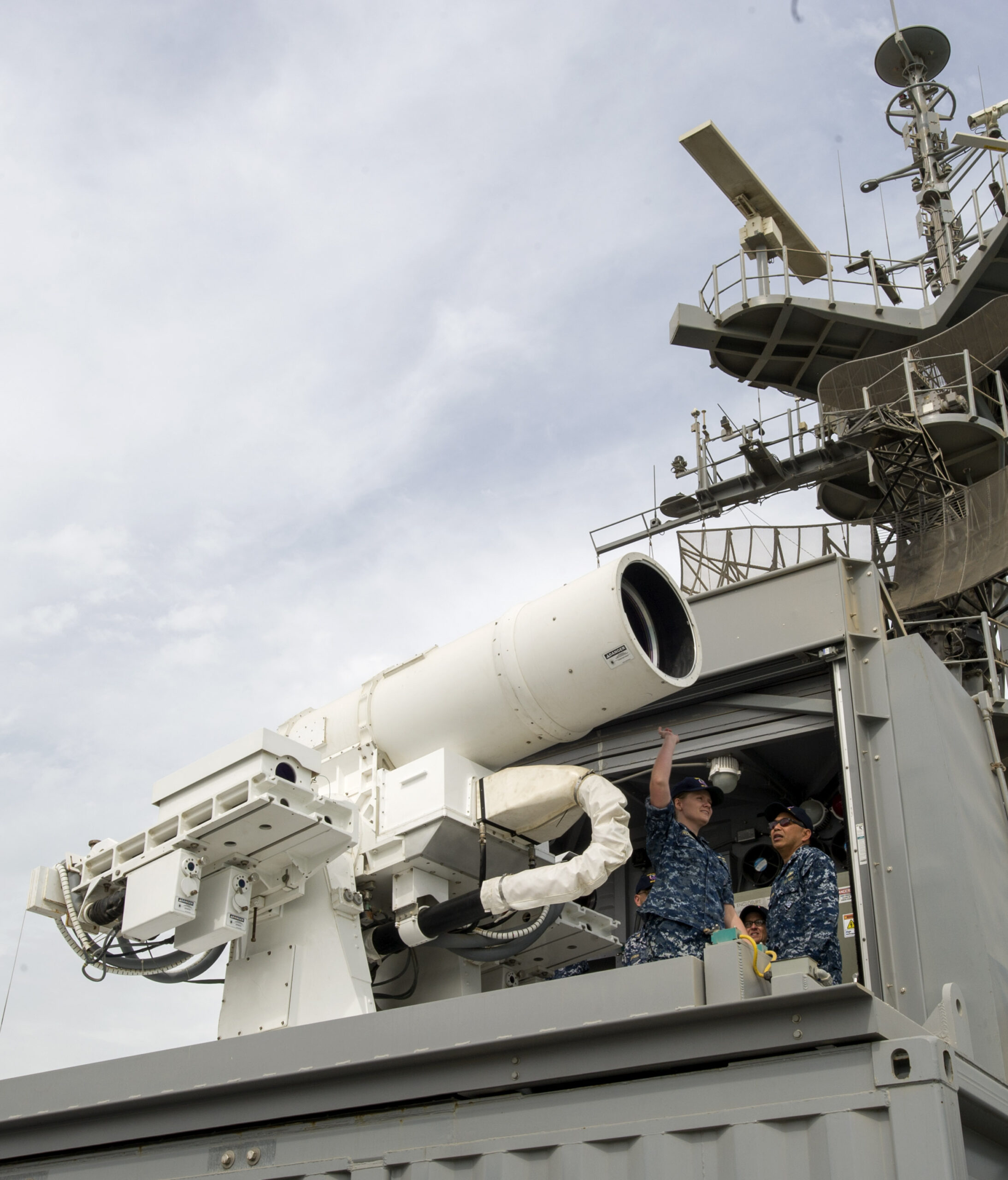
Credit: US Navy
Programmatics
The DragonFire trial was sponsored by the MoD’s Defence Science and Technology (DST) and Strategic Programmes organisations. In 2017, the MoD’s Chief Scientific Advisor’s office had awarded the DragonFire consortium a GBP 30 million (EUR 36 million) research contract to demonstrate potential LDEW capabilities. This was an early step in the UK’s wider programme to transition LDEW technology from the research environment to the operational environment. In 2019, the MoD established a three-year DEW concept phase programme to analyse and mature technologies, including both LDEW and Radio Frequency DEW (RFDEW) systems. A maritime LDEW system is a priority requirement within this programme, alongside a land-based LDEW system and a land-based RFDEW system (the latter intended to counter UAV threats).
The January trial combined elements tested previously. In earlier trials, the DragonFire consortium had demonstrated the technology’s ability to track moving air and sea targets at distance with high degrees of accuracy.
Testing at the UK’s Porton Down land-based test range in late 2022 focused on developing the laser itself and using several different targets at different ranges to develop the beam director’s accuracy. “The ability to deliver high levels of laser power with sufficient accuracy are two of the major areas that need to be demonstrated in order to provide confidence in the performance and viability of LDEW systems,” Dstl said, in a statement released alongside the testing.
In July 2024, again at Porton Down, Dstl trialled a separate LDEW system – a lightweight, portable, speed-of-light weapon, produced by Raytheon UK and developed again to tackle uncrewed system threats (especially aerial) – fitted to a British Army Wolfhound armoured vehicle. In a statement, Dstl said this was the first firing of an LDEW fitted to a land vehicle. “The advanced capability demonstrator will allow the MoD, along with the British Army, to understand the utility of LDEW systems against an evolving threat,” Dstl’s statement added.
For DragonFire, its capability and performance – as demonstrated in the trials to date – have contributed to the UK’s decision to accelerate the maritime LDEW programme and bring forward the in-service date by five years to 2027. “The trials have seen us take a huge step forward in realising the potential opportunities offered by DragonFire, and the step-change it will provide in the ability to deal with high-performance and low-cost threats,” said Wray.
Maritime implication
For the RN, the importance of non-kinetic, lower-cost systems like LDEWs is underlined by the fact that LDEW capabilities are being considered for some of the navy’s core future platforms, including the Type 26 City class frigate and Type 83 destroyer.
Eight Type 26s are to be delivered from 2028, and the first two vessels – future HM Ships Glasgow and Cardiff – are in the water. Type 83, which is due to begin entering service in the mid-2030s, is the platform around which the RN’s future air-defence system (FADS) multi-domain dominance concept will be based, with the destroyer being the platform ‘hub’ to which a range of onboard and offboard sensors and effectors will be connected up. As the RN’s First Sea Lord and Chief of Naval Staff Admiral Sir Ben Key told the Defence and Security Equipment International (DSEI) exhibition conference in London in September 2023, FADS is being designed to generate dominance in air defence and long-range precision targeting. Both Type 26 and Type 83 will be required to counter various air-defence and uncrewed system threats.
Initially, a third UK MoD LDEW development strand – a maritime-specific programme developed under what was called Project Tracey, with Thales leading a team including BAE Systems and Chess Dynamics – was underway. The MoD concluded the programme in December 2023, drawing design, engineering, integration, and other technology lessons into the UK’s wider LDEW work.
While the UK’s forthcoming Strategic Defence Review (SDR) – commissioned by the new Labour government, and set for publication in the first half of 2025 – will no doubt set out further details on the UK’s DEW requirements, the most recent MoD Defence Command Paper – published under the previous government in July 2023 in tandem with the Integrated Review refresh, and detailing the capability programme that will deliver the defence operational outputs required to support the UK’s strategic direction – stated that laser-based systems like DragonFire “will give the UK armed forces the capability to neutralise targets without the need for ammunition”; “DEW such as high-power lasers will form the basis of capabilities that deliver protection against new threats like drone swarms,” it added.
Maritime integration
DragonFire’s concept, capability requirements, and core roles demonstrate the UK’s focus on integrating LDEW systems with other capabilities, both existing and emerging, to provide integrated effect against threats, again both existing and emerging.
As regards prospective integration into maritime operations, “DragonFire will provide an additional layer within integrated air and missile defence [IAMD] in both the maritime and land domains, able to tackle a range of modern threats,” said Wray. “It will serve as a complementary effector to traditional defensive systems such as guns, Sea Viper, and Sea Ceptor.”
As regards dealing with emerging threats – for example, mass attacks using ballistic or cruise missiles, UAVs, or USVs – DragonFire’s role as an effector within such a networked IAMD construct would encompass providing close-in defence and short-range air defence against high-volume, low-cost asymmetric threats, said Wray. “As the technology matures, this capability will increase to intercept more stressing targets although, due to the limitations of being a line-of-sight system, it will not replace the need for traditional effectors,” he continued.
Indeed, while the DragonFire capability brings unique advantages, integration with traditional effectors remains a central element of the system’s concept, to maximise overall IAMD effect.
“DragonFire’s advantage will be that it offers unlimited magazine depth, near instant in-to and out-of action times, and the potential to be a long-term, low-cost alternative to certain tasks conventional kinetic weapons currently carry out,” Wray noted. “However, it is a line-of-site weapon, and certain weather conditions do not lend themselves to effective LDEW operation. Whilst we are progressively understanding and working to limit this aspect, it is why LDEWs are a complementary effector to traditional defensive systems like guns and missiles.”
This integration with other systems is critical to how DragonFire can add mass in modern naval combat operations, Wray explained. “LDEWs provide an unlimited stockpile, increasing the overall quantity of effectors on board. While LDEW [capability] cannot deal with every threat, what it allows is traditional missiles to be used against the threats that are more stressing, increasing the overall effectiveness of the platform’s air-defence capability,” he said. “To improve this further, integrating LDEW effectors with the other air-defence capabilities on board into a single C2 [construct] will provide the opportunity to rapidly optimise the effect to the threat, further improving effectiveness.”
There is another angle to the cross-programme integration element. Despite being based around non-traditional, ground-breaking technologies, DragonFire also draws on technologies being used in other, in-service systems. “The system uses algorithms that are an extension of MBDA’s missile technologies, which are fundamental in being able to detect an aimpoint on a moving target – at range – and ensure that the high-energy optical beam is maintained upon this target aimpoint,” Wray explained.
As regards DragonFire’s physical integration into maritime platforms, “Significant redesign is not anticipated, and initially the system will have minimal integration to allow for rapid deployment, with the intent being for this to increase over time,” Wray explained. For example, the design intent would be for the system to draw on the host platform’s power and cooling rather than bringing a standalone supply. What would require careful assessment, he added, would be the optimum onboard location, which would also depend on the platform type.
DragonFire’s design concept also reflects the long-standing Western military focus on building platform modularity through containerisation. For example, it has a modular system design based around using standard ISO shipping containers, enabling it to be moved between platforms and between domains, said Wray. Thus, he added, “[it provides] a capability that can be shared by services if needed”.
Dr Lee Willett
Dr Lee Willett is an independent writer and analyst on naval, maritime, and wider defence and security matters. Previously, he was editor of Janes Navy International, senior research fellow in maritime studies at the Royal United Services Institute, London, and Leverhulme research fellow at the Centre for Security Studies, University of Hull in the UK.
Sources
MBDA – written interview
Leonardo website – DragonFire page
MoD DragonFire test statement, Jan 24: https://www.gov.uk/government/news/advanced-future-military-laser-achieves-uk-first
https://www.gov.uk/government/news/laser-power-moves-a-step-closer-for-uk-defence
https://www.gov.uk/government/news/first-trial-on-british-army-vehicle-for-high-powered-laser-weapon





